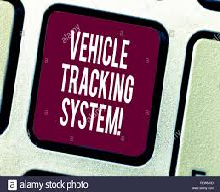Customer Tracking Systems Conceptual Model a. An entity is defined in the text as a person, place, object, event, or concept in the user environment about which the organization wishes to maintain data. An entity type is a collection of entities that share common properties or characteristics. The identified entity in the Pine Valley Furniture case scenario is the customer.

The reason that customer is an entity is that it fits under the categories of a person, place, object, event, or concept. Customer profiles can describe customers while items can describe the inventory and orders describe themselves. Additional entities include clients, which fall under the entity category of person, orders, the products, the buying patterns of products for each customer, and the customer’s feedback. Interrelationships that exist between the entities include the fact that the greater the volume or content of orders from customers, the more product is sold, and the easier it is to determine a pattern of the customer’s buying habits.
- An attribute is defined in the text as a named property or characteristic of an entity that is of interest to the organization. Attributes are named with nouns and those with multiple words in the names are often connected with underscores. Examples of attributes for the entity of customers includes Customer_ID, Customer_Name, Customer_Type, Customer_Address, and Customer_Phonenumber. Examples of attributes for the entity of order includes Order_ID, Order_Description, Order_Items, Order_Amount, and Order_Status. Examples of attributes for the entity of pattern includes Pattern_ID, Pattern_Description, and Pattern_Items. Examples of attributes for the entity of feedback includes Feedback_ID, Feedback_CustomerID, and Feedback_Description. Examples of attributes for the entity of product includes Product_ID, Product_Description, Product_Type, Product_Quantity, and Product_Price.
- The diagram that I have made below is meant to show the entities in the scenario as well as the relationships that they have with each other. The diagram is further meant to illustrate the set of associated attributes and the identifiers that go with them. It also shows which specific entities are connected.
- The differences between the Customer Tracking System’s conceptual model and the model of the Webstore are there. While the conceptual model and the model of the Webstore both give you info about the paying customers (which is the identified entity), the differences include the fact that the Customer Tracking System’s conceptual model also has the database design of just a new feature that has been added to the entirety of the Webstore design. Further, the model of the tracking system just covers the new app that is still under consideration. Lastly, the customer tracking system’s conceptual model considers only the data that is necessary for the current application whether or not the model for the Webstore is created to show




